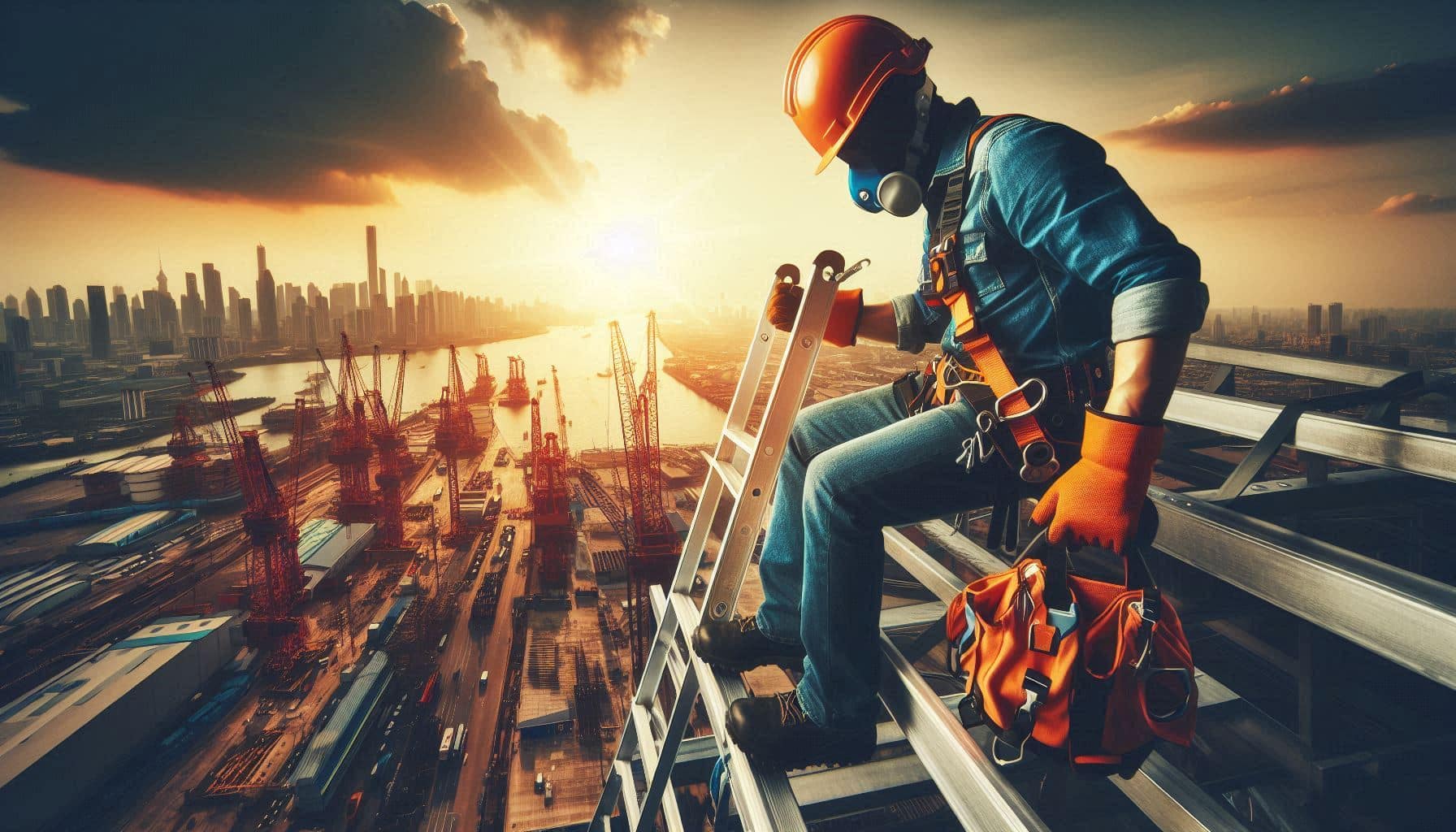A Guide to Proper Safety Gear for Ladder Work at Heights

Working at height using ladders can be dangerous if proper safety precautions are not taken. Having the right safety gear is essential to prevent falls and injuries when working on ladders. This guide will provide an overview of the must-have safety gear for ladder work at heights.
Head Protection
A helmet is one of the most important pieces of PPE for ladder work. A helmet protects your head from impacts if you fall or drop tools or debris. Look for an industrial safety helmet made from durable, shock-absorbing material. Make sure it has a chin strap to keep it securely on your head. The helmet should be worn at all times when on the ladder.
Footwear
Proper footwear is vital for maintaining your footing on a ladder. Choose sturdy, non-slip work boots with ankle support and good tread on the soles. Steel toe-capped boots provide protection if you drop heavy objects on your feet. The boots should have good grips and not be too bulky, so you can fit your feet comfortably on the ladder rungs. Avoid working in loose shoes or sandals which can easily slip.
Hand Protection
Protect your hands from abrasions, cuts, and punctures by wearing tough work gloves. Look for gloves made from leather or synthetic materials that allow good dexterity while providing padding and durability. Gloves with textured palms and fingers give better grip and prevent your hands from slipping on the ladder.
Clothing
Wear snug-fitting clothing that won’t catch on the ladder or tools you’re using. Avoid wearing loose shirts, jewellery, and scarves that can become entangled. Sturdy trousers or overalls protect your legs and prevent items in your pockets from falling out. High visibility vests are recommended so you remain clearly visible while working at heights.
Fall Arrest System
For working at heights above 10 feet, a fall arrest system is required by law. This safely catches you if you slip and prevents serious injury. A full body harness distributes the shock across your shoulders, thighs, and pelvis in a fall. It connects securely to a lanyard or retractable lifeline anchored to the structure. Inspect all fall arrest gear thoroughly before each use and know your weight limits.
Tool Attachment
Prevent dropping tools or materials by keeping your hands free on the ladder. Use tool belts, holsters, or bags to keep tools attached to you when climbing. Rope off buckets of materials so you can raise and lower them as needed. Don’t overload pockets with heavy tools that could cause you to become unbalanced.
Inspection
Thoroughly inspect all ladders and safety gear before each use. Check rungs and rails on ladders for cracks or defects. Ensure braces and extensions are secure. Look for fraying, damage, or wear on harnesses, lanyards, and lifelines. Tag and remove any defective equipment from service. Don’t take chances with faulty safety gear when working at heights.
Training
Get formal training in ladder safety, including fall protection systems. Know the proper techniques for setting up, securing, extending, and climbing ladders. Follow the manufacturer’s instructions for weight capacities. Understand how to use fall arrest gear safely. Training gives you the knowledge and skills to work safely at height.
With the proper safety gear and training, ladder jobs can be performed securely. Don’t risk your safety by cutting corners. Follow these guidelines to work safely at heights when using ladders. The right protective equipment and precautions will let you get the job done properly.
Observer Voice is the one stop site for National, International news, Sports, Editor’s Choice, Art/culture contents, Quotes and much more. We also cover historical contents. Historical contents includes World History, Indian History, and what happened today. The website also covers Entertainment across the India and World.

